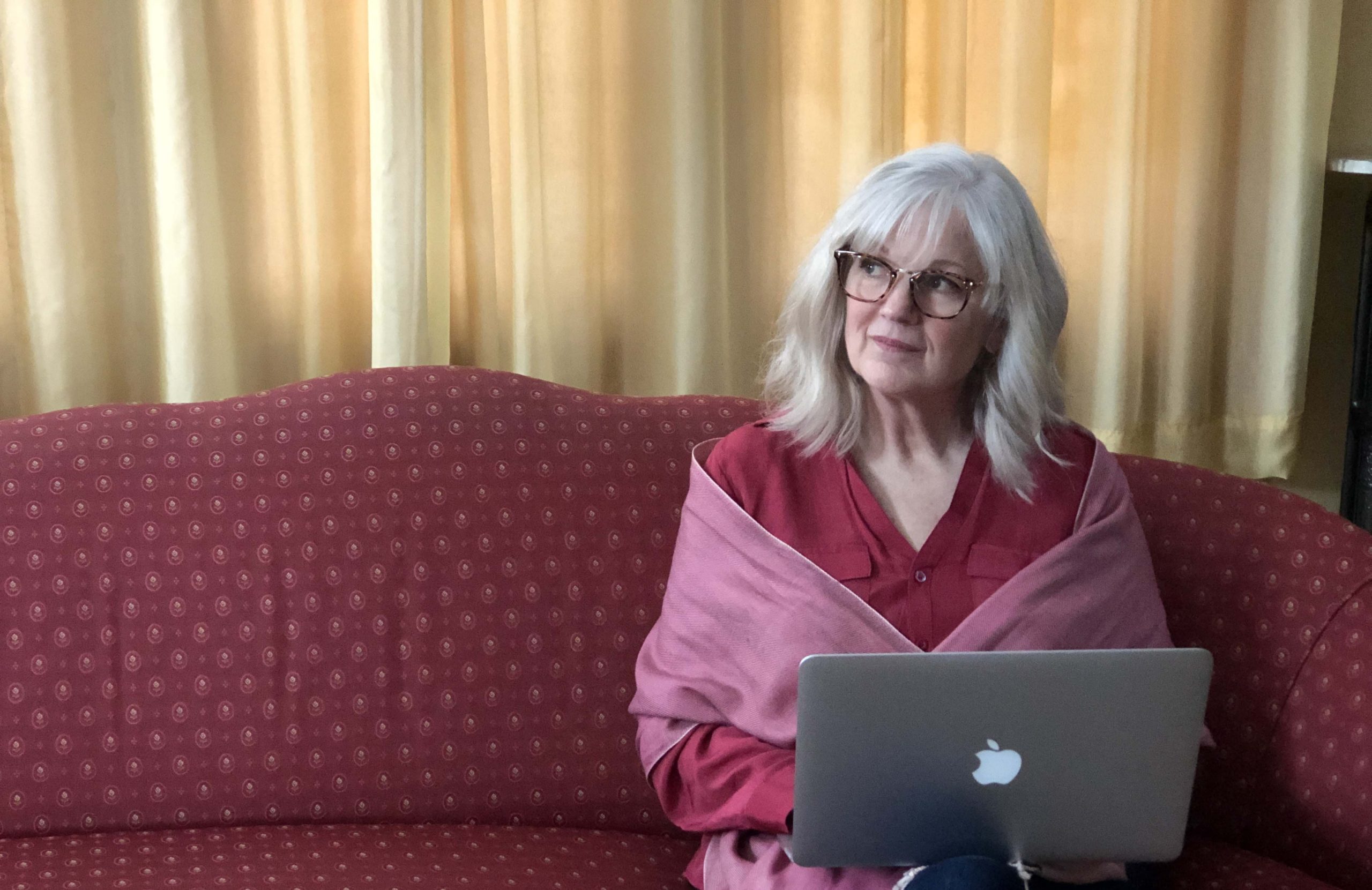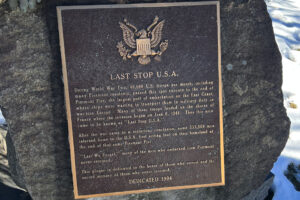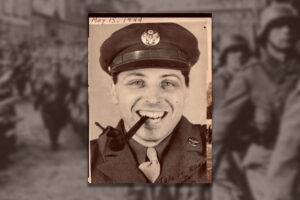I chose yellow for the child psychologist because he was the boldest, and pale pink for the two neurologists who wimped out on us. Green for both psychiatrists, although one should have been sage and one neon slime. Immersed in color-coding my spreadsheet, I ignored my phone when it rang. Blue for the OT and PT. Ding–it was my sister. Dates in bold, names in upper case. Ding–I’d call her back later. Notes in italics. Ding, ding, ding.
“Hi Mary Beth,” I said, “How are you feeling today?”
“I had my brain scan,” she answered.
“Oh, I’m sorry, I forgot …”
“They found a mass.”
My first, selfish thought was, I can’t do this again!
For most of the summer, I had avoided the dining room table’s smorgasbord of wrinkled appointment receipts, notebooks, and dog-eared work calendars. I didn’t want to remember 1997 when my son, Matthew, was eleven. There were too many appointments and too many doctors and too many memories from the year he was diagnosed with a brain tumor. But for some reason that day in June 2018, I pushed through my resistance and opened my laptop, determined to declaw the past.
When Matthew was eight, he developed grimaces and twitches, which our pediatrician said were developmentally normal “habit tics.” Over the next three years, other weird behaviors popped up—spitting on the floor, spitting on himself, wiping snot on walls. Slowly, mysteriously, Matthew ceased to be the bright, active child he had been. And I ceased to be the mother I had hoped to be, my patience dried up like a prune.
I knew we needed help. As an elementary school counselor, I often referred families for counseling when their needs surpassed my training. The term “child psychologist” didn’t scare me. However, my husband, Mike, an architect, squirmed at the idea of airing one’s secrets, and gladly took a pass for the initial appointment.
“What brings you here today?” the psychologist asked with the widest grin I’d ever seen, just shy of “from ear to ear.”
Where to begin? Ours was not only the story of a struggling child. I didn’t bring Matthew to counseling—I brought us. Yes, Matthew needed to follow directions, stay organized, and stop being so damn silly. But I needed help too. I wanted my love for him to override my urge to wallop him.
“I don’t have the relationship I want with my son,” I replied. Then I smiled at Matthew and gave his knee an affectionate squeeze, trying to communicate to my boy that we were there because I loved him, that no matter what, I would always love him.
After a few sessions, the psychologist concluded Matthew had ADD—Attention Deficit Disorder—similar to ADHD, but without the “H” for “hyperactivity.” It made sense. Matthew couldn’t remember the solution to a math problem long enough to write it down, and he lost enough lunch boxes, gym clothes, and jackets to stock a sale rack at Walmart. And the missing “H” was accurate, if odd. Prior to the previous few years, Matthew was full of “H.” But lately, other than the bursts of silliness, he had slowly downshifted to “N,” for “no energy.”
Our months of counseling, behavioral modifications, and medication, however, didn’t improve Matthew’s increasing distractibility and immature behavior. Nor did it help his grades, which had slipped from straight As to Bs and Cs. So we began making the rounds of specialists and their diagnostic dartboards, each wild shot missing the mark but piercing my heart.
Four years younger than me, Mary Beth is single, with a waist-length river of silver curls. Her hair is her brand, an image she polished as a high-end designer and architect in Chicago. In 2013, Mary Beth was forced to cut back on work when Lyme disease bit. Her legs became so weak, she could barely walk to the kitchen for a sandwich, and if she got there, her hands were too feeble to hold a plate. Then she faced scleroderma, an autoimmune disorder that causes hardening and tightening of the skin, connective tissue, and sometimes internal organs.
I was with her for that diagnosis, having flown out from New York to visit. In a tiny exam room, a blond rheumatologist with cute leather boots casually dropped the scleroderma bombshell. After Leather Boots stepped into the hallway, leaving a chart on the counter, Mary Beth and I pounced on the folder, and scrolled down the list of lab results with our fingers. We had not misunderstood. Shit. I took her by the shoulders, looked her in the eyes and said, “We’re not going to freak out yet.”
As Mary Beth’s joint pain and muscle weakness worsened, hives and vomiting added to her symptomatic stew. Then, early in 2018, her balance started to go, veering her off to the left when she walked down the long hall of her condominium. Suspecting something like multiple sclerosis, she made an appointment with a neurologist.
“MS? I hope not,” I told her. I mean, how much can one person take?
In the months before a brain scan solved Matthew’s medical mystery, he frequently fell off his rollerblades and bike. Walking up a set of stairs, he often teetered on the edge of a step, almost toppling backward. And he started having panic attacks.
“It’s just a clumsy phase,” the pediatrician insisted. “And pre-adolescent anxiety is normal.” But our rounds of neurologists and psychiatrists finally resulted in an order for an MRI to rule out anything serious.
On a jacket and sunglasses morning in October 1997, when Matthew was eleven, he lay on a gurney outside the gaping maw of a metal cylinder that had just spit him out. On the other side of the window, Mike and I crowded into a cramped radiology lab. The door closed us in. A heartbeat of silence. Then, I heard it.
“We found a growth.”
The words at first escaped my ability to comprehend them. Then they slowly seeped into my brain and I started to shake. “It’s not malignant,” the doctor said. “Not serious.” My gut roiled as conflicting emotions battled for control. Should I be happy or sad? Relieved or distraught?
The growth was—is—inoperable. It clung—clings—to Matthew’s brainstem, too deeply embedded to excise. The tumor had caused hydrocephalus–an accumulation of cerebrospinal fluid in the brain’s ventricles–filling them like water balloons, squishing Matthew’s grey matter into a sliver against his skull. Surgery would relieve the hydrocephalus, and we were told Matthew would “bounce back.” We didn’t know then that the bounce would be more of a decades-long dribble.
Twenty-one years later, when my sister said, “They found a mass,” immediately, I was back in the lab looking at Matthew’s growth on a computer monitor, shaking. But this time, it was my sister lying on the other side of the window. I saw her silver tresses cascading down the side of the gurney. Then I pictured her, bald. Then with stubs of straight white bristles. Will she keep it short?
“Let’s not freak out yet,” I said on the phone, coming back to life.
“They think it’s benign.”
Should I be happy or sad? Relieved or distraught?
“Doesn’t this sound like Matthew’s story?” she asked, bizarrely calm.
“It’s surreal,” we said together.
I told her I had just resurrected my memoir that morning, and I was trying to make sense of all that had happened when she had called.
“This can’t be happening,” I said, panic notching up the pitch of my voice.
“I have to go. They’re admitting me.”
“I love you,” I said before we hung up. I wanted to say so much more, but the words wouldn’t come. I’m sorry and Everything will be OK and You’ll beat this, and My sweet, beautiful, baby sister, I can’t lose you. I wanted to cry, but that would be freaking out, so I waited until our call ended.
Then, pacing the house, I sobbed. I had to talk to someone, someone who knew Matthew’s story, who understood why “benign” was anything but. I didn’t want to bother Mike at work while I was so upset. But I was slipping into an abyss, and I needed to cushion my fall.
And that’s when I realized how I’d changed. In the intervening years between the first tumor and the second, there was growth of another kind: I discovered I was not the woman I had been.
When Matthew was diagnosed, after Mike and I had overcome our shock, I called my parents, my work supervisor, and a close neighbor, and asked that they spread the word. I didn’t call my sister–we weren’t that close back then. Being a working mom consumed me; building her design practice consumed her.
“I don’t do the girlfriend thing,” Mary Beth had once said, and, like her, I lacked a sisterhood. I had no BFF or circle of confidantes to call with my sorry news. The women friends I had were friends of convenience—neighbors and work colleagues, mostly. Daily chit-chatting on the phone or prolonged small talk demanded more energy than I had to give. The few moments of solitude I could siphon off a busy day were rare and precious, like the biggest buttercream rose on the last piece of birthday cake. I wouldn’t share a bite. And if I did feel the need to connect, I chose not to disturb my convenience friends for fear they would disturb me the next time. Fair is fair, after all.
In the weeks ahead, I shared Matthew’s story with acquaintances as I ran into them. What I didn’t share was my story—how I felt inadequate as a mother, how I hadn’t fought hard enough for my son when he was deteriorating, how the recovery process overwhelmed me. And, how would I admit that I couldn’t wait for Matthew to grow up and leave home so I could breathe? For that kind of sharing, a bond needs to be deep and strong, loving and sure, convenient or not.
When Matthew did become independent and move out, I finally had my fill of solitude, giving me the energy to discover and nurture close friendships. So after my sister’s call, as soon as I stopped crying enough to be coherent, I got on the phone. I slid into the abyss of pain where I was well-cushioned by caring women who “got me.” A few friends—whom I chose and nurtured–said they were honored I turned to them. And I felt honored in return. Surrounding myself with this big-hearted tribe in the weeks ahead was a win-win, a long-overdue act of self-love.
I had much to learn about self-love. After Matthew’s diagnosis, Mike and I took “bounce back” at face value, and I was convinced we’d see our real Matthew again, our “Little Einstein,” my “gazelle.” Life was going to be great, so what need had I to heal? The crisis was over; who required downtime? Matthew would need to recover, but not me. It wasn’t me who had brain surgery.
But the years of slowly losing my child along with a chunk of my sanity left me wounded. I didn’t understand that, though, and the more I tried to soldier on, the more my body fought me physically and emotionally. Sinus infections, debilitating joint pain, binge-eating, depression. It took over a year after Matthew’s surgery for me to realize he wouldn’t bounce back. It took another three years to understand that the only way our family would survive would be if I left my job to devote myself to my son’s success. I thought it would take a year. It turned into seven.
When my sister called in 2018, I knew the contagion of her news would seep into my pores and cells, causing billions of neurons to misfire. Certainly, I didn’t feel Mary Beth’s diagnosis as intimately as my own child’s, but her mass was a punch to an already tender gut. I knew before I felt it that I’d need to heal the wound to prevent it from festering. So I grounded myself in the earth of my flower gardens. Letting housework go, I napped instead. I drank lots of water but not too much Chardonnay, and gave in to trashy TV. I meditated, walked, talked to friends, cried to my therapist. And, I wrote.
Throughout my difficult motherhood, my mom had urged me to keep a journal. But the few times I tried to capture my thoughts or the events of the day, I blathered on the page, struggled to decipher my poor penmanship, concluded I was a mess, and quit. Journaling, as I understood and practiced it, was one draft, period. It never occurred to me to sit with the words and see what they could teach me. I decided I was a verbal processor. But with whom to process? I had a therapist, but what about the thirteen days in-between appointments? What about 3 AM when I couldn’t sleep? Mike listened up to a point, but he was a “pick yourself up by your bootstraps” guy, an “it’s over, let’s move on” pragmatist. And given my limited social circle, there were never enough ears willing to listen, and none I trusted with my story anyway. With no reliable outlet, I kept it all in.
I didn’t discover writing until a few years after Matthew’s surgery when I decided no one would believe the saga, including my future self, if I didn’t capture the experience in intelligible prose. Writing was different than journaling, I found. My self-discovery happened not in the first draft, but in the second and third and tenth drafts, after I reflected and revised and stared at the ceiling for hours and stepped away and came back. It was the process of bringing order to the chaos that my true aha moments occurred. I revised; therefore I grew. It was another form of self-love.
After my sister’s call, I was too busy freaking out and then too numb that day to write. But the next morning, I rushed to the dining room table and typed a flurry of words. I revised, reflected, and realized how much I had grown in the previous two decades.
Two days later, a blessedly narrow strip of Mary Beth’s silver hair was shaved, and during a nine-hour surgery, doctors removed a meningioma the size of an orange. The benign tumor, most commonly found in middle-aged women, may have been growing for decades. Within hours after surgery, Mary Beth sat up, smiled, and engaged in meaningful conversation. The first weeks of throwing up and relearning to walk were challenging, but within a month, her chronic pain and weakness had already begun to dissipate. Lyme and scleroderma still took their toll, but within two months, she felt better than she had in the previous five years.
Benign pilocytic astrocytomas like Matthew’s are most commonly found in children, and his may have been growing since birth. Surgery to treat the hydrocephalus caused by the tumor was quick, and he was out of the hospital after two days, back to school in two weeks. But his symptoms were slow to abate, and the first twenty years of recovery were the worst. Then, like a rusty pendulum clock coming back to life, everything started to tick. Each cog of every gear in his brain nudged the next one so the machine that was Matthew began to purr. He became the poster child, er, young man, for “neuroplasticity”—the ability of the brain to adapt. Although his comeback was not as dramatic as my sister’s, knowing that both loved ones would be in my life, hopefully for many years to come, was as sweet and rich as a whole sheet cake full of buttercream roses. Every now and then, I took a finger-swipe to be sure it was real.
I ditched my spreadsheet a week after Mary Beth called. So little of my story fit neatly into tiny boxes. But I stayed committed to writing my memoir about the growth in a child’s brain—tangible, finite, real—and the personal growth—no less real—it triggered in his mother.
“Seriously, Mary Beth,” I’d said in a lighter moment before her surgery, “I can’t add a chapter or an epilogue or afterword to this memoir. I have to get it done already.”
From her hospital room, about to undergo brain surgery, my beautiful baby sister deadpanned, “Make it a sequel.”
Karen DeBonis has a thirty-year career in health promotion, involving public speaking, media appearances, group facilitation, teaching, and program development. Twenty years ago, after her eleven-year-old son was diagnosed with a brain tumor, she added writing to her resume. Those early pages are now a transformational memoir about persevering through motherhood adversity.
As Karen’s writing emerged, so did her mission “to facilitate dialogue among and about people-pleasers, because sharing our story is the first step in becoming emboldened.” To that end, she developed projects to help others reclaim their voices and offers these to subscribers and the public at no charge. Wipe Your Feet Before You Walk All Over Me, her upbeat webinar, gives participants customizable steps to build assertiveness skills. Pleased to Meet You focus groups provide a safe space for small groups to discuss eye-opening questions. And, as part of a larger project, Karen dialogues with mothers and daughters about why women do or don’t speak up.
Karen expands her reach through her blog, website, social media presence, and published essays. Her N.Y. Times Tiny Love Story, My Son the Homeowner, appeared in the Times’ 2020 anthology. In addition, she writes a quarterly essay for Writers in the Storm, an award-winning blog, and has been featured on podcasts and interviews.
A happy empty-nester with her husband of thirty-nine years, Karen lives, writes, gardens, and naps in upstate New York.
Karen’s website is https://karendebonis.com/





